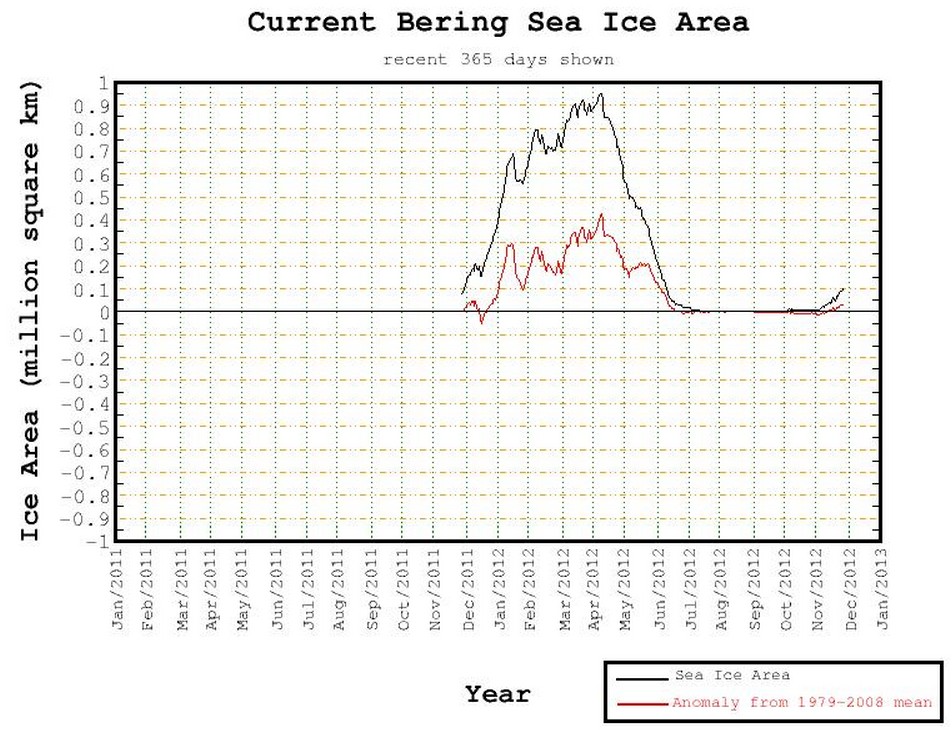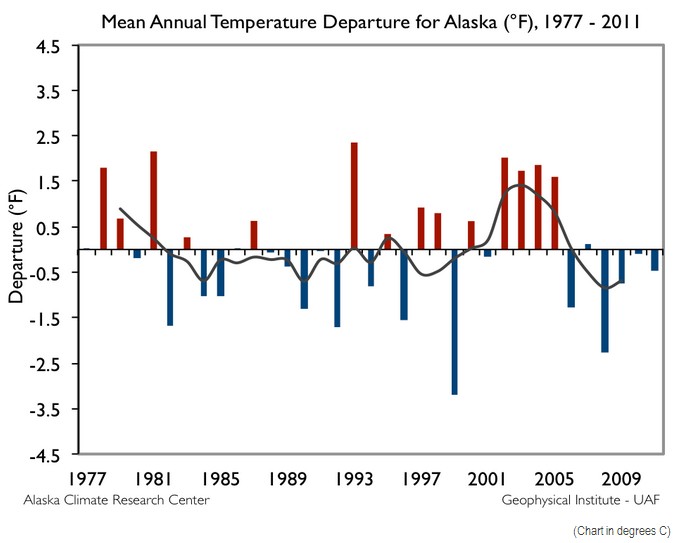Sea ice in the Bering Sea has been above normal for the past year, and is already running ahead of last year’s record levels.
University of Illinois – Cryosphere Today
Climate experts say that Alaska is the canary in the coal mine, and that it is the fastest warming place on Earth.
On average Alaska has warmed by about 4 degrees Fahrenheit over the last 150 years. There are widespread consequences such as melting glaciers and insect-devastated forest in response to this temerature change. Scientists say Alaska is like a canary in a coal mine, foreshadowing the types of changes we can expect for the rest of the world.
Disappearing sea ice is one reason the Arctic is warming more than lower latitudes, because white Arctic ice normally reflects the sun’s heat into space, whereas dark, open water absorbs heat.
Scientific American Frontiers . Hot Times in Alaska. Canary in a Coal Mine | PBS
Only problem is that people who actually look at thermometers say the exact opposite.
The First Decade of the New Century: A Cooling Trend for Most of Alaska
Alaska Climate Research Center, Geophysical Institute, University of Alaska, Fairbanks, AK 99775, USA
We looked at the temperature trend of the first decade of the 21st century for the 20 first order stations in Alaska and found that 19 of the 20 stations showed a cooling trend.
www.benthamscience.com/open/toascj/articles/V006/111TOASCJ.pdf
The University of Alaska says that temperatures in Alaska have declined 0.3C since 1977, and that five of the last six years have been below normal.




Alaska is the canary in the coal mine?
Surely in the future coal mines will be a thing of the past.
In the future your children wont know what coal was. (If Hansen and Obama get their way)
Meanwhile snow is a thing of the future your children will know what snow is and how bad it can be.
It looks like there is a severe weather warning for barrow.
http://www.intellicast.com/Local/Weather.aspx?location=USAK0025
Where do ice ages (glaciations) start. In the Bering Sea perhaps ? Followed by Canada and the US, followed by Europe.
The interesting thing is that Alaska was not covered with ice during the last ice age. The ice was thickest in central Canada, and the decline in sea level allowed people to walk across the Bering Strait on a land bridge.